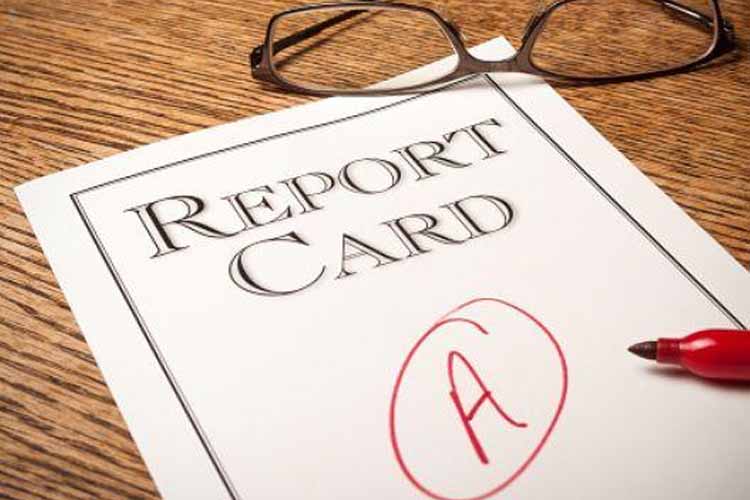- Imagine
the surrounding in your classroom. What does the room look like? What
resources are available for students? How are the resources used during
the lesson?
My classroom will have desks and chairs the students sit in.
The room will not be perfectly decorated, but it will be a comfortable and
happy place to be. There will be an inspirational quote that is on a central
wall in the room about using your education to help others. A)There will be an
inspirational quote about the importance of education in several different
languages to represent many different cultures. Another
important part of the classroom will be a GLSEN Safe Space sticker put in a
prominent part of the classroom. One wall of the room will have a
bookshelf with many different types of books. Historical fiction,
autobiographies, etc. These books will be available for students to check
out and to read when they finish their assignments early. B) These books will illustrate different cultural narratives.
They will not just be historical fiction novels about white guys in history,
but they will be about many different groups. These books will also have
varying difficulty levels. The books will also
be available in English and Spanish (and other languages if they are
available). The room will be VERY organized and not cluttered.C) I hope to also have a cool poster or bulletin board that
represents many different cultures and beliefs (for example, it could show
different ethnic groups during history, different religions, etc.) I could
place a cool quote around this about how important different culture are to the
study of history and NOW.

|
This is a good example of a classroom that is organized
and not cluttered
Source: Shaver, Lauren. Bless'er House. 23 February, 2014. https://www.blesserhouse.com/2014/02/creating-cozy-classroom-on-budget.html
D)
I still think this picture is fine to show how my
classroom will be not cluttered and organized, however I would add another
picture of the desks in groups instead of single individual desks. It would
help immigrants who are learning English or other students who may be
struggling in the class if they had a table group who they can get to know
well and ask for help when they need it. Group work has been proven to be
beneficial to all levels of achievement among students.

Source: Desk Arrangements, Pinterest. Accessed 14 April
2018. https://www.pinterest.com/kimberlynjs/classroom-set-up-desk-arrangements/?lp=true
|
Places to turn in assignments will be labeled clearly and in
an easily accessible place. Classroom policies will be clearly posted on
a wall.E) After reviewing classroom policies, students will write about
them in a reflection. There will be questions like, “What does respect look
like?” and “What does being helpful to other students in the classroom look
like?” Though I may have policies posted on the
wall, the most important thing is to show my expectations so that everyone can
understand them. This places the burden on me as a teacher to model the
behavior that I want, instead of the burden on the students to read my policies
and understand exactly what I want because of them. Resources for
students will include chrome books that they can use during lessons to do
historical research or to do learning as a group (watching videos, doing
research, etc.) There will be a projector and a computer. I will use the
computer to project PowerPoints that will help lead our discussion. I also hope
to have pencils available as resources for students who don't have any. Another
resource I hope to have are some snacks in my desk. When students are falling
asleep or seem disengaged, I may offer them a snack as a resource to help them
pay attention. F) I also will have a part of the room with pamphlets. These
pamphlets will discuss things like suicide prevention, clubs available around
the school, resources for LGBTQAI+ students, tips for ELL, etc. These pamphlets
will hopefully open up important conversations and be a good resource for the
students. They will also lead to having a conversation about students being
activists and allies in their communities.

|
An example of what my book shelf might look like in my
classroom.
Source: Holland, Mary. Creating a Classroom Library. https://www.tips-for-teachers.com/classroom_library1.html |
- Describe
the students in your classroom. What are their backgrounds? What are their
interests? What are they doing during the lesson?
The students come from diverse backgrounds. Many come from
low-income homes and are dealing with the problems that come from poverty (lack
of food, arguments, a non-ideal housing situation, disengaged parents etc.).
Some of their homes may be high-income but they also may struggle with issues
(parents fighting, disengaged parents, etc.) High school students may
come from diverse backgrounds and have different ideas about life.G) Because of this I will have to make sure they have safe
chances in my class to discuss their differences and get to know each other.
but they do normally have common interests that can help to bring them
together. Despite the fact that many of them
have interests in pop culture, sports, music, or art. Or
like playing the same video games and watching similar TV shows, it is important to realize they also have very important and
distinct cultural and religious differences. All of them have people
they care about in their lives. I hope to use their interests to connect my
material to their lives, and to do this I will have to
know their individual interests by getting to know them through get-to-know you
surveys and interviews. During the lesson they are active! They are
discussing, participating, writing and thinking. My classroom will NOT be a
place where the students number one job is to listen. Listening to me talk will
for 50 minutes straight will not help them pay attention or learn. H) Because discussion is such an important part of my classroom,
I will have to make the opportunity to discuss available for all students.
Students with disabilities will be paired with a specific student to help them
with discussions. When discussion is part of a grade or a huge part of class
that day, ELL will be placed with a peer who can help translate for them, so
they too can participate in the discussion.

|
An example of students working together to learn!
Source: Grabau, Christopher. Incorporating Principles in Cognitive Psychology...2nd October, 2017. https://www.facultyfocus.com/articles/teaching-and-learning/incorporating-principles-in-cognitive-psychology-to-improve-student-learning/ |
- Describe
your classroom policies. What are your classroom rules? What is your
discipline plan? What are your homework policies?
My plan for discipline is to have my classroom policies
clearly posted in the room and to makes sure my students are familiar with
those policies. I)
Before I make a policy I will make sure there is a good
reason and that I’m not just following white codes of respect. Policies
will be consistent and I will constantly assess myself
through keeping a good record of my classroom discipline (office referrals,
etc.) so that I can make sure I am disciplining all of my students in the same
way and not discriminating. There
may be times where I can adjust policies based on the situation (students with
illnesses or who need extra help may turn in assignments later than the
deadline for late work, etc.). For classroom rules a main rule will be
respecting others.J) As discussed earlier, part of the first days of school will
be filling out a policy worksheet where students talk about what respect looks
like to them (and other school policies). Also as mentioned earlier, an
important part of students understanding policy will be me modeling what I want
them to do, instead of just expecting them to completely understand based off
reading the policy. I also will only allow cell phones during certain
times. I hope that one of the most important parts of my discipline plan will
be prevention. I hope that class will be interesting enough and organized
enough that it will prevent most behavior problems. I hope to have good
relationships with my students in order to help resolve behavior
issues. Late work will be excepted for two weeks after an assignment
is due but deductions will be given. After two weeks the late work will not be
excepted unless there are extenuating circumstances.
- Describe
a typical lesson you will teach in your classroom. What will you teach?
What is the topic? Why did you choose this topic? How will you teach it?
What is the main thing you want students to learn during this lesson?
During a typical lesson I will present some material in a
lecture-style for a brief time to give background. The subject will be history,
and the topic will probably come from the common core. K) An example
topic could be a discussion about the Bear River Massacre in a Utah State
History Class. Instead of just teaching this event from the perspective of the
White settlers, I will also teach it from the viewpoints of the Native
Americans who were part of the event. Through this lesson I will teach students
about perspective taking and how different one event can look to different
groups of people. With the message of
perspective taking as a take-home lesson students will feel that what they
learned is more applicable. I will also remember as I teach the lesson that
this is many of my students “secondary discourse” and that history is a
language that they need help learning. I will be patient with this. I hope to center my lecture around
interesting, opinion-based questions that the students will discuss throughout
each lecture. I hope that students will learn how to articulate their ideas,
debate respectfully, and that by discussing and interacting with the material
they will understand it and remember it better.L) I also realize that my
classroom will probably be naturally very Christian-centered. When a discussion
of religion is pertinent I hope to bring up religion in a respectful way and
illustrate how religion may have changed the way people acted in history. This
will keep talking about religion relevant but will also help students to
realize that all religions have value.
- Imagine
your work as a teacher during this lesson. What are you doing during the
lesson?
I see myself as leading a discussion. During the lesson I will
present content but will let the students debate about and discuss the content.
I am therefore a mediator, facilitator and a source to look to for help.M) I also am the “expert” in the room, but not just on
history. I will be well-informed about
different cultures and experiences of immigrant students, LGBT students,
students from different religions, students from different socioeconomic
statuses, etc. I will be an ally and a friend to these cultures and will
correct students when they inappropriately talk about these groups.
- Imagine
your students again, what are they doing during the lesson?
The students are talking, debating, and working together.
They are also listening while I am giving some context to the material and the
historical question we are discussing. They are engaged and having a good
time. They are smiling and laughing! N) Students
are helping each other, and table groups will be strategically assigned.

|
I hope to make my classroom a place where students smile!
Source: Elias, Maurice. Helping Your Students Identify Their Values. 3rd July, 2017. https://www.edutopia.org/blog/helping-your-students-identify-their-values-maurice-elias |
- Imagine
how you will assess your students' learning and achievement. How will you
know they have learned?
I imagine I will use some common assessment tools like
multiple choice and short-answer tests. However, I also hope to use other
tools. For example I will have students read historical documents and give them
written exams that test their ability to go through a historical-thinking
process. I also hope to include self-chosen projects as assessments so
students can have a chance to express themselves in the way that they choose. O)
If students are assessed the same way every time, this
could be unfair to one specific culture group or minority. As I vary assessment
strategies I can make sure to not be stuck in the “white way” of doing
things. I will know students have learned when I see
improvements in not only their test scores, but their ability to participate with
their peers in class.

|
Students may choose to present information as a form of
assessment.
Source: British Council. Teaching English. October 2006. https://www.teachingenglish.org.uk/article/student-presentations |
Reflective Piece:
For each change that I made I have placed a letter in front
of it! Here are my reasonings behind my changes (and things that I kept the
same)
A)
Originally my inspirational quote that was large
on the wall was going to be just in English. Because of how important language
is, I think that placing this quote in many different languages will show that
1) My classroom is open for many different cultures and ideas and 2) I want students
to be able to read things in their native language.
B)
Originally, I hadn’t even thought about my books
being in different languages or discussing different cultural narratives or
being in different difficulty levels. This is an important part of
differentiation and having an effective multicultural education class. If the
books are accessible to everyone and on a variety of subjects, I will be
teaching not just my cultural narrative, but many different narratives.
C)
Having a classroom decoration that show
diversity and different cultures will establish the same purpose as letter A. It
will show the importance of different cultures, languages, religions, etc.
D)
I added the picture of groupwork for the reasons
described in my imagine classroom…. Groupwork can greatly benefit English language
learners, those from lower abilities, and even those of different socioeconomic
statuses.
E)
My classroom policies needed some work. I
learned from class that things like “respect” can mean different things to a lot
of different people. As I recognize different cultures and help to get to know
what my students believe about respect (for example) based upon their life
experience and culture, I can learn how behavioral policies will look to them
and even amend some of my policies with the help of the class.
F)
As stated in the imagine classroom assignment, I
think adding pamphlets as part of the decoration and set up for my classroom
will not only allow students to get resources if they need them, but will also
tell students that I am aware of these issues and willing and ready to talk
about them. This can help students from different cultures, LGBTQ students,
students suffering with mental health challenges, etc.
G)
I assumed too much in my original imagine
classroom that students will have common interests that will bring them
together. Though many of them may have common interests, I think it is
important to realize their differences. As I understand my students’
differences instead of seeing them as all the same (for example, “oh, he’s a
middle school boy. He probably likes playing Call of Duty and eating pizza) I can
teach to them individually and have a nurturing pedagogy.
H)
In my original imagine classroom I focused on
group discussion, but didn’t even think about the fact that some students might
not be able to participate in lots of discussion (ELL learners, students with special
needs, etc.) This time I made sure that discussion would be something
accessible to them.
I)
In my original plan for discipline I didn’t
think about monitoring myself for biases. I think this is a super good thing to
do and I am thankful we discussed it in class and that I could add it into my
reimagined classroom.
J)
J is discussed in letter E.
K)
When I initially did my imagine classroom I
missed putting in an actual lesson plan, so I made sure to add that this time. I
made sure to add in my lesson plan that I will have to be focused on teaching
my students this “secondary discourse”. I also made sure that my lesson would
teach things from two different cultural narratives so I am not just teaching the
“white guy” version of history.
L)
I hadn’t mentioned anything about religion
previously but after taking this class I realized it is really important to
address different religions, especially because many of my students in Utah may
be Christian and may never have been exposed to different types of religion.
M)
I wasn’t sure where to put this in my re-imagined
classroom but I wanted to make sure I would be a teacher that is well-informed
about different communities and folks of all types. If I am informed, my
students may be more motivated to be informed.
N)
I’m glad that I put in my original imagine
classroom that students would be working together, but in order to facilitate that
and help students engage with other students they possibly wouldn’t have
engaged with on their own I need to strategically make table assignments.
O)
It’s good I have a variety of assessment strategies,
however I decided to add in that my assessments shouldn’t just be the “white
way” of doing things. As a diversify my assessments I can have a multicultural pedagogy.
Things I didn’t change:
I’m glad I decided to have snacks on hand for students that may come for a low
SES and be hungry. It’s almost impossible to learn while you are hungry! As for
the resources I have listed, I know which class I am teaching in next year so I
am not assuming I will have these resources, in my case I know I will. I am
glad I described the students as having different backgrounds and coming from
many different life situations. My pictures in general were pretty good, though
as mentioned I added one picture. I liked how my pictures showed students
working together. I felt my late policy was acceptable and not too harsh. I also
didn’t change it because I figured that most schools actually have their own
late policy that is school-wide. The school I will be teaching at has a late
policy that I will be required to implement. It is good that my original imagine
classroom had a variety of assessments. There were a few other things I didn’t
change because they seemed to fit in well with a multicultural classroom.
What I learned: This experience was humbling. I realized that
there are many things I can do to improve my teaching! Though my original imagined classroom wasn’t necessarily bad and I didn’t cross a lot of things out, there
were MANY things that needed to be added that I hadn’t even considered when I
first wrote this. I am glad to have this re-imagined classroom and will refer
back to it as I begin teaching and want to remember everything that I learned
in multicultural education. I am excited to reach out and love all my students,
no matter their religion, culture or sexual orientation.




















